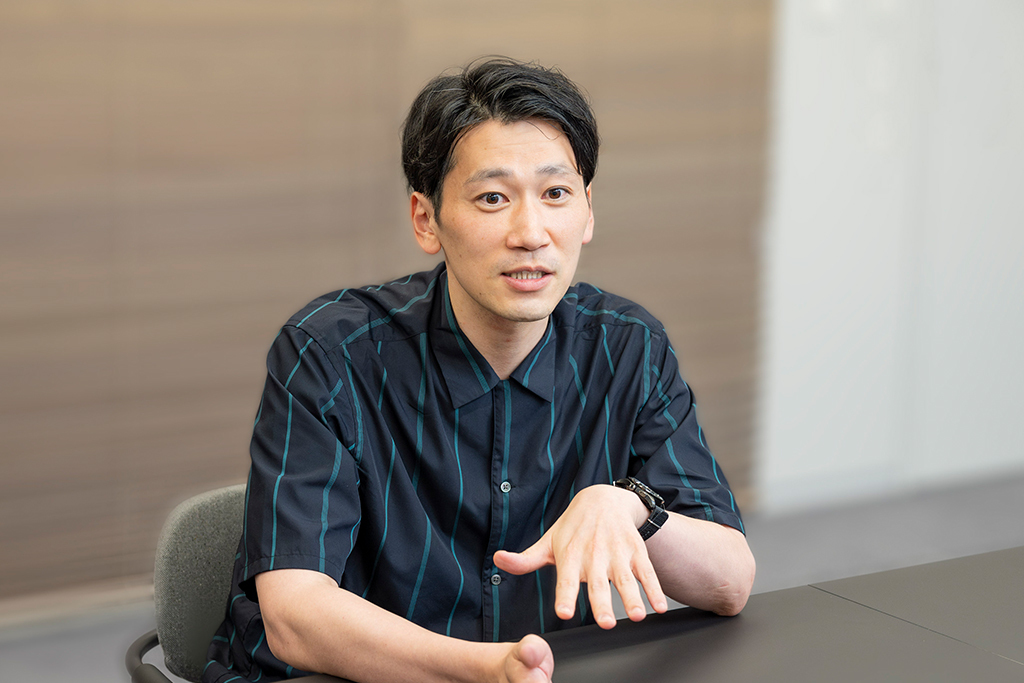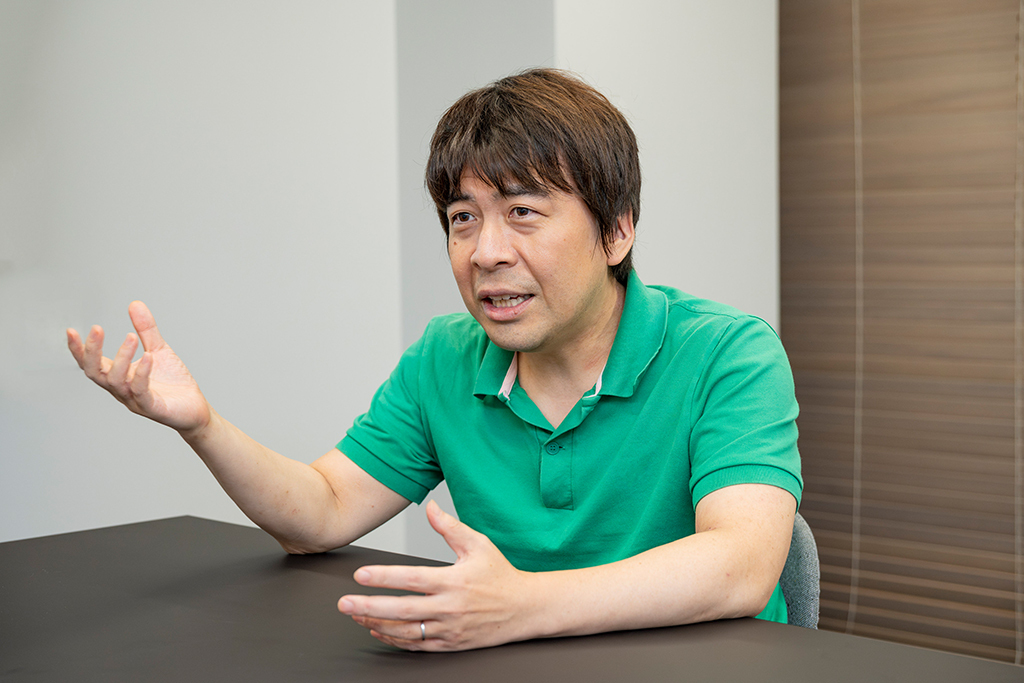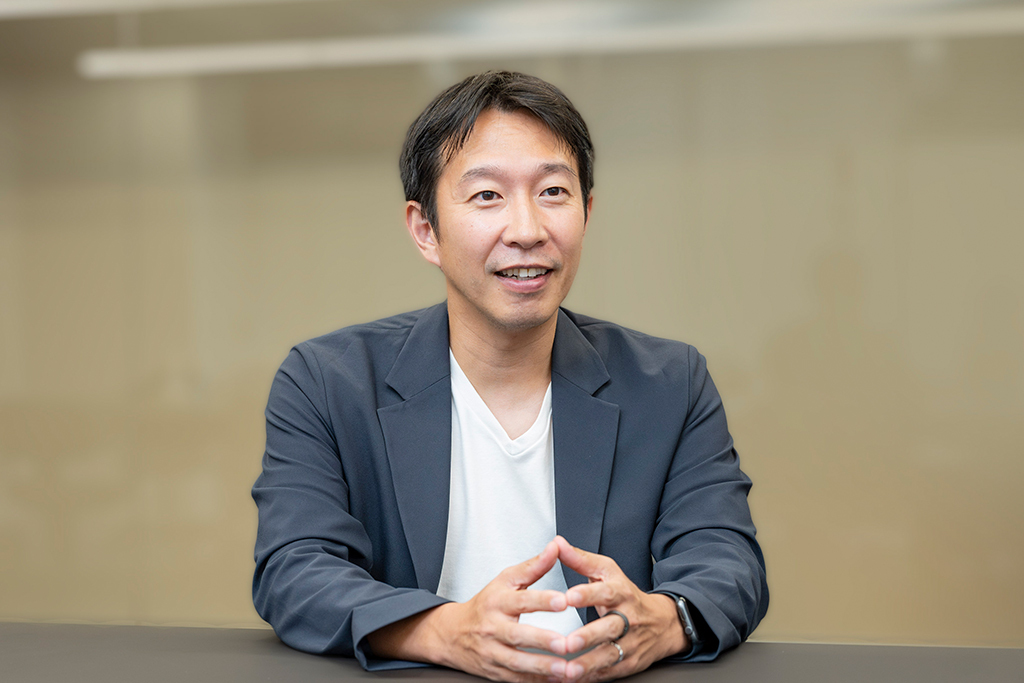Note: This website was automatically translated, so some terms or nuances may not be completely accurate.
Developing an Incubation Facility with a Dual Approach of "Business Design × Spatial Design": The Story of Creating "CRIK Shinano-cho" at Keio University (Part 1)

Masaya Nakamura
Keio University / Keio University Hospital

Nobuaki Shindo
Keio University

Yoshiaki Takai
Dentsu Inc.

Suzuki Kei
Dentsu Inc.

Ryusuke Nanki
Dentsu Inc.
On May 29, 2024, Keio University opened its dedicated incubation facility, the "Keio University Shinanomachi Research & Incubation Center ( CRIK Shinanomachi )," on its Shinanomachi Campus (Shinjuku Ward, Tokyo).
Located on the 9th floor of Keio University School of Medicine/University Hospital Building No. 2, the facility was established as a space where like-minded medical and healthcare professionals, along with startups and major corporations from diverse fields, can gather to conduct joint research and development and grow, under the purpose of "making people-centered medicine and healthcare the common sense of the future."
Dentsu Inc. provided end-to-end support for this facility, from its conceptual planning through launch. The project was advanced using the newly launched "KU-KAN TSU-KAN" service, which employs a dual-track approach of spatial design and business design to realize Keio University's vision.
This article features an interview about the project, facilitated by Yoshiro Takai, Executive Producer at Dentsu Inc. Startup Growth Partners. In Part 1, we spoke about spatial design with: - Masaya Nakamura, Vice Dean (Innovation) of Keio University School of Medicine and Professor of Orthopedic Surgery - Nobuaki Shindo, Head of the Innovation Promotion Headquarters and Head of the Startup Division at Keio University - Kei Suzuki, Creative Director at Dentsu Inc. - Ryusuke Nanki, Dentsu Inc. (responsible for spatial design)
Aiming for the "Heart" of Healthcare in the "Heart" of Tokyo

Achieving our mission in healthcare while expressing hospitality

Developing facilities through reversible processes on both software and hardware fronts

To spark innovation, it's sometimes necessary to pursue excitement rather than being bound by efficiency. According to Mr. Suzuki, curiosity triumphs over efficiency—a defining characteristic of Dentsu Inc.'s spatial design team. Each time they proposed a design plan leveraging the hospital's unique characteristics, Keio University representatives, including Mr. Nakamura, actively contributed their opinions and participated in discussions. This resulted in the creation of an incubation facility that addresses the university's core challenges.
In Part 2, we will delve deeper into the approach from business design.
*Use of medical data is subject to review for each research project and requires patient consent.
The information published at this time is as follows.
Was this article helpful?
Newsletter registration is here
We select and publish important news every day
For inquiries about this article
Author

Masaya Nakamura
Keio University / Keio University Hospital
Keio University: Professor, Department of Orthopedic Surgery, School of Medicine
Keio University Hospital: Chair, Committee for the Promotion of Regenerative Medicine, Clinical Research Promotion Center
Graduated from Keio University School of Medicine in 1987. After positions at the Department of Orthopedic Surgery, Keio University School of Medicine, and Georgetown University in the US, became an Assistant Professor at Keio University School of Medicine in 2000. Served as a Part-time Lecturer at the Institute for Regenerative Medicine, Kyoto University; Part-time Lecturer at the Department of Pharmacology, Hoshi University College of Pharmacy; and Associate Professor at the Department of Orthopedic Surgery, Keio University School of Medicine, before becoming a Professor in 2015 (position held to present). Recipient of numerous awards including the Japanese Orthopaedic Association Encouragement Award, the Bertz Award, and the Japan Society for Regenerative Medicine Award.

Nobuaki Shindo
Keio University
Innovation Promotion Headquarters
Head of Headquarters and Head of the Startup Division
Contributed to the creation of marketed drugs (XOSPATA) and multiple development compounds, primarily in the oncology field, within the Drug Discovery Research Division at Astellas Pharma Inc. Promoted collaborations with academia in Europe and the US, executed investments in startups, and established joint ventures within the Open Innovation Division and CVC Division. After overseeing alliance management for industry-government-academia collaborations within the Research Planning Department, assumed the role of Head of the Startup Division at Keio University's Innovation Promotion Headquarters in 2022. Ph.D. in Health Sciences. NEDO SSA Fellow. Completed graduate studies at Keio University Graduate School of Medicine.

Yoshiaki Takai
Dentsu Inc.
Startup Growth Partners Senior Business Producer / NewsPicks Studios COO
After joining Dentsu Inc., he gained experience in media, marketing, and business production. He led the startup "Fans" to victory in an acceleration program and was seconded to the company. Subsequently, he established Startup Growth Partners, Dentsu Inc.'s dedicated startup producer organization, and returned to the parent company. Currently, he primarily focuses on growth support to enhance startup corporate value, innovation support for collaborations between startups and major corporations, and fostering university-spinoff startups. Additionally, as COO of NewsPicks Studios—a joint venture between Userbase and Dentsu Inc.—he provides direct management support on a contract basis, contributing to the business's growth.
Articles by this person

Developing an Incubation Facility with a Dual Approach: "Business Design × Spatial Design". The Story of Creating "CRIK Shinanomachi" at Keio University (Part 2)

Developing an Incubation Facility with a Dual Approach of "Business Design × Spatial Design": The Story of Creating "CRIK Shinano-cho" at Keio University (Part 1)

Suzuki Kei
Dentsu Inc.
6th CRP Bureau
Group Creative Director
Recipient of numerous awards including the 2006 TCC Newcomer Award, 2011 Cannes Lions Media Bronze, and 2014 Yatte Minahare Keizo Saji Award. Leader of TANTEKI, which verbalizes and visualizes startup value.

Ryusuke Nanki
Dentsu Inc.
Future Creative Lead Office
Architect
Born in Shinjuku, Tokyo. Graduated from Keio University. During university, belonged to Shigeru Ban's seminar. Handles spatial design (exhibitions, offices, stores, architecture), branding (traditional culture, cities), and product development (planning, product design). Past projects include planning/spatial design for the Paris Rosanjin Exhibition; planning and editing the Japanese confectionery collection "IKKOAN" with trilingual Japanese-French-English text; creative direction for Michi-no-Eki Toyohashi; and rebranding for Tsukiji Outer Market. Selected for the Ministry of Foreign Affairs Japan Brand Promotion Project in 2016, delivering lectures in Europe.

